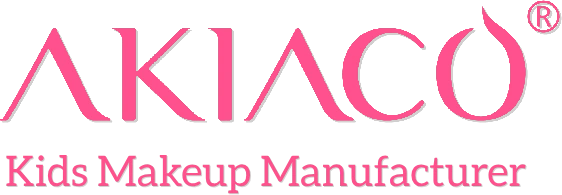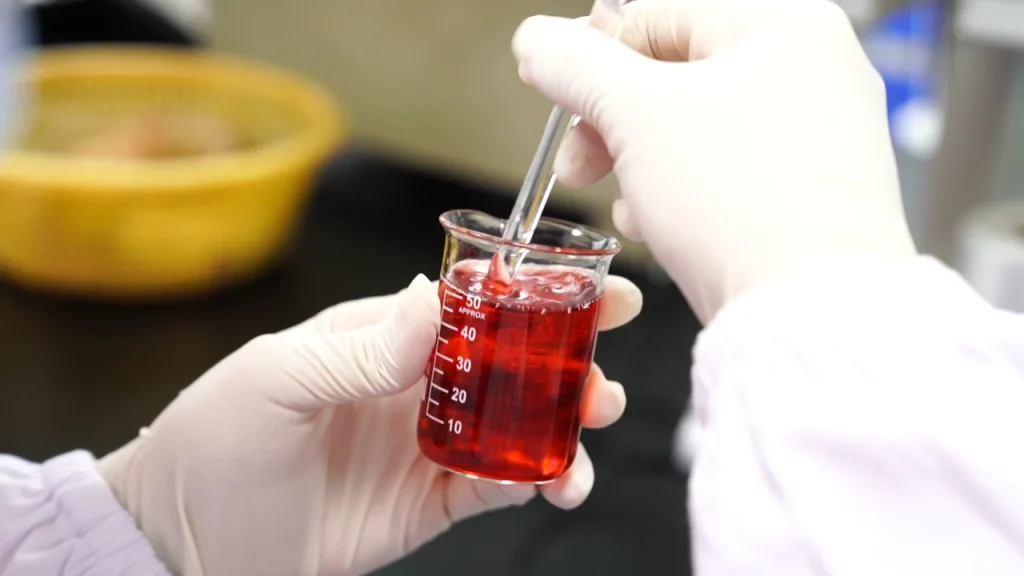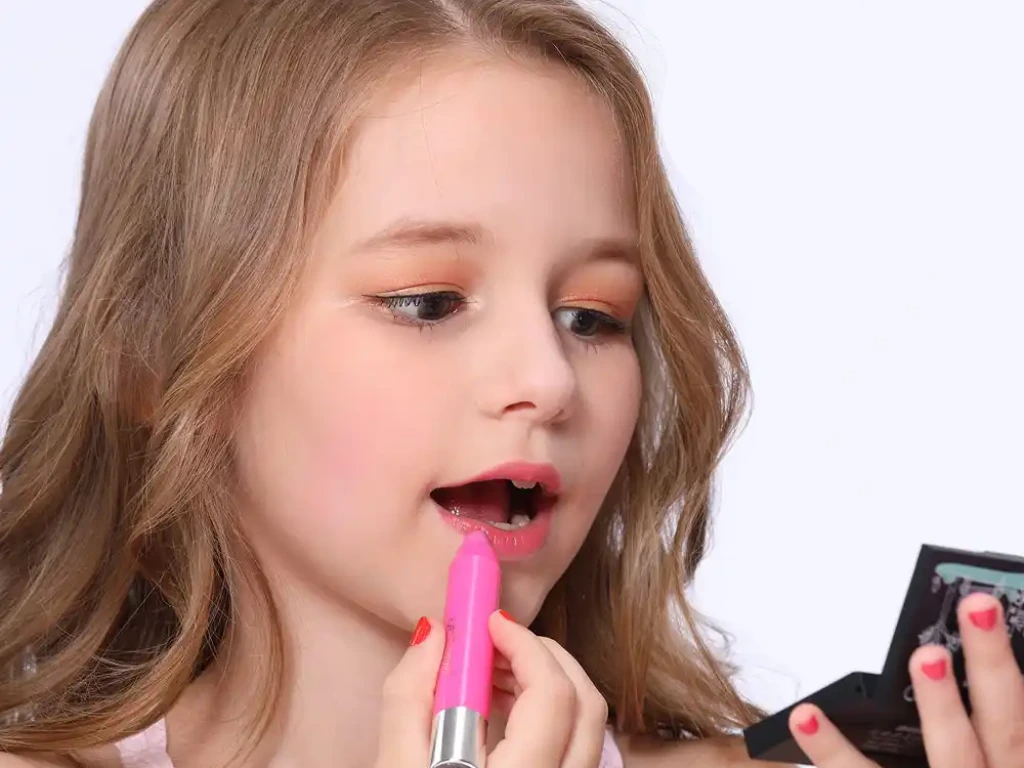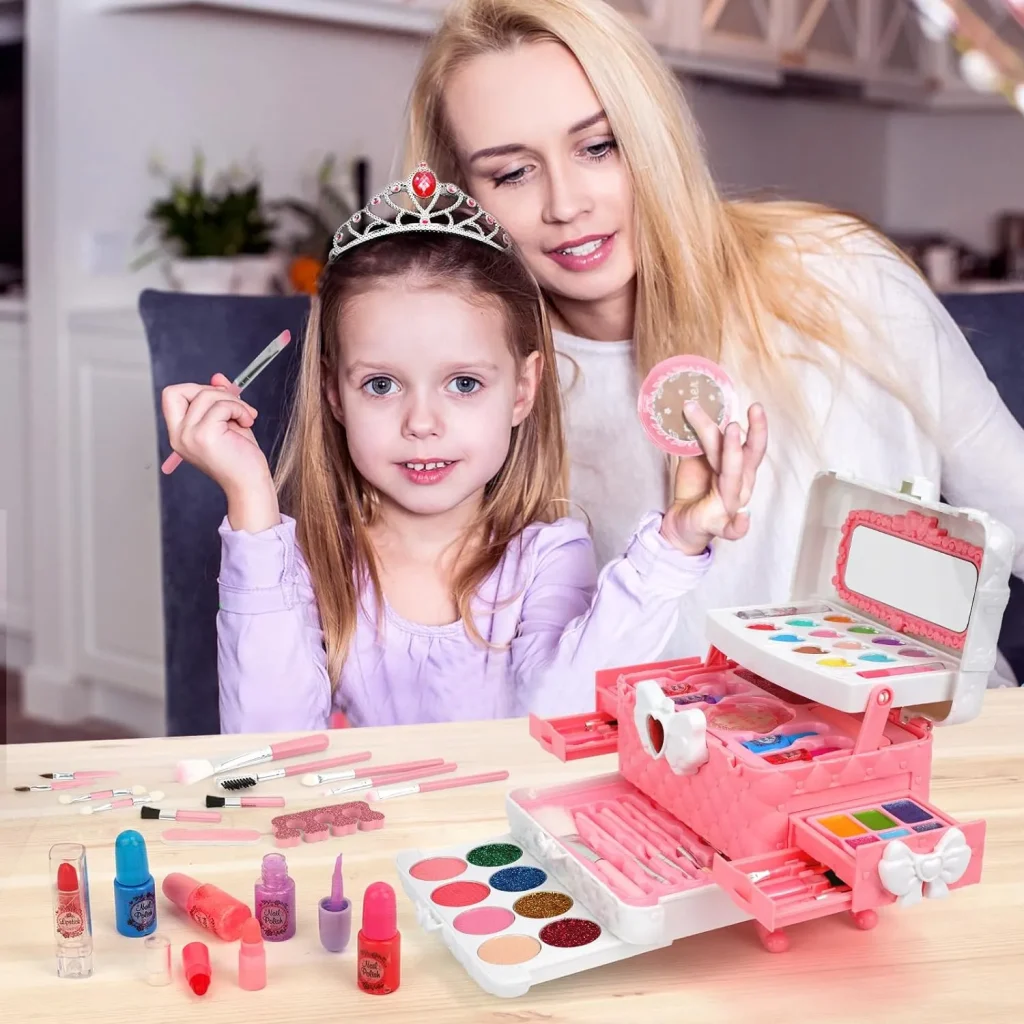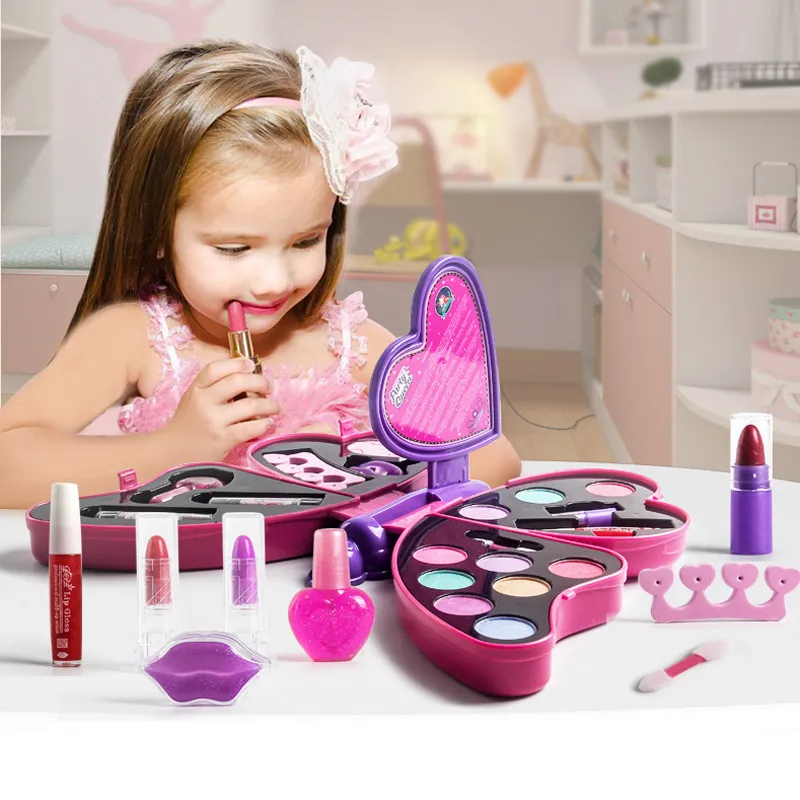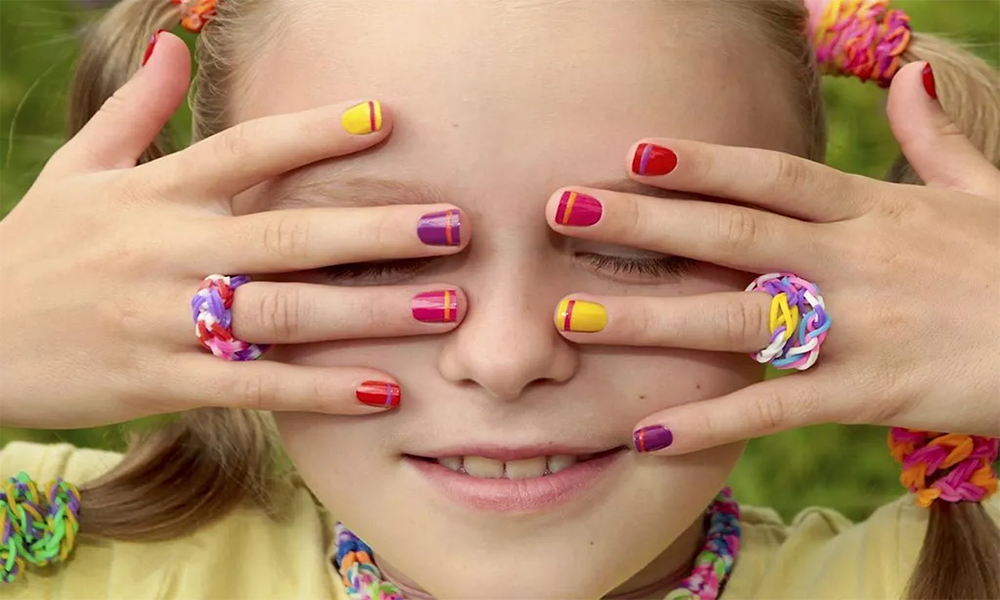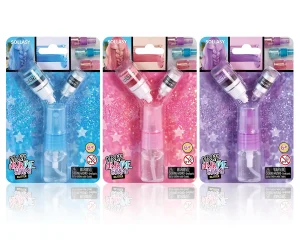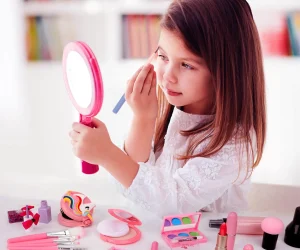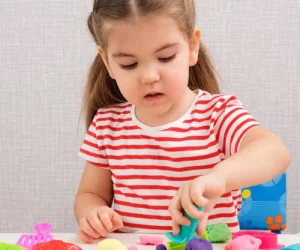Is Kids Makeup FDA Approved? What Parents Need to Know
Table of Contents
In recent years, kids’ makeup has become a common part of playtime. But more parents now wonder: is this stuff actually safe? And is it FDA approved?
The question isn’t just about fun colors and glitter. It’s about knowing what touches a child’s skin—and who’s making sure it won’t cause harm.
Growing interest in kids’ cosmetics and play makeup
Children love to copy what adults do. When they see parents applying lipstick or blush, they want to try it too. This has led to a boom in children’s makeup kits—often marketed as “safe,” “gentle,” or “non-toxic.”
Some kits are sold as toys. Others are made to look like real cosmetics. Many contain lip glosses, eye shadows, and glitter. They may be sold in stores, online, or even included in party favors.
The packaging is colorful. The claims are big. But parents are left wondering: what’s actually in these products?
Increased concerns about ingredient safety
Some kids’ makeup products have raised red flags. In 2018, asbestos was found in a makeup kit marketed to children (U.S. PIRG report, 2018). Other reports have shown products with lead, parabens, and fragrances—all known to irritate or harm skin.
Unlike adult cosmetics, children’s makeup is often used without understanding what’s in it. And since kids have thinner skin, harsh ingredients can enter the body more easily.
Parents today ask more questions. They search ingredient labels. They want to know who checks these products and how safety is tested. Unfortunately, the answer isn’t always clear.
Misleading packaging and claims: where confusion begins
Some packaging includes words like “dermatologist-tested,” “safe for kids,” or “non-toxic.” These phrases are not regulated by the FDA and may not mean much at all.
Also, if a product is labeled as a “toy,” it might not be treated as a cosmetic by regulators—even if it contains lipstick or eyeshadow. This creates a gray area in safety rules.
Parents often assume that if it’s sold in a store, it must be safe. But that’s not always the case. The look and language of kids’ makeup can be confusing, even for careful buyers.
Understanding the Role of the FDA in Cosmetics Regulation
Parents often ask if kids’ makeup is FDA approved. The short answer? Usually not. But that doesn’t always mean it’s unsafe. The long answer depends on how the FDA regulates cosmetics in the U.S.—and what it means to be approved versus regulated.
What the FDA regulates under the Federal Food, Drug, and Cosmetic Act
Under the Federal Food, Drug, and Cosmetic Act (FD&C Act), the FDA oversees cosmetics sold in the U.S.—including makeup for adults and children. This includes products like lip gloss, blush, eye shadow, and face paint, as long as they’re not sold as toys.
The FDA doesn’t check every product before it reaches stores. Instead, it sets basic rules. These include:
- Ingredients must be safe for use
- Labels must not be false or misleading
- Color additives must be approved
However, the law puts the responsibility on manufacturers—not the FDA—to make sure products are safe and properly labeled.
The difference between FDA-approved and FDA-regulated
Many people confuse FDA-approved with FDA-regulated. Here’s the difference:
- FDA-approved means the product went through a formal approval process, like drugs or some medical devices.
- FDA-regulated means the product falls under FDA oversight, but doesn’t require pre-approval.
Cosmetics—including kids’ makeup—do not need FDA approval before being sold. Only specific ingredients, like color additives, require FDA pre-market approval. Everything else is left up to the company.
So if a makeup kit says it’s “FDA approved,” that’s likely not accurate—unless it refers specifically to an approved color additive.
Why “FDA approved” is not always required for makeup products
In the U.S., most cosmetics are not approved by the FDA. The agency does not test or certify these products before they hit shelves. Instead, it can step in after a product is on the market—usually in response to complaints, recalls, or safety concerns.
For example, if a child’s makeup kit causes skin rashes and enough reports are made, the FDA can investigate. They can issue warnings or recalls. But by that point, the product may have already reached thousands of homes.
Because of this, it’s important for parents to stay informed, read labels, and watch for signs of irritation—especially when buying inexpensive or imported kids’ makeup.
Is Kids Makeup FDA Approved by Default? The Surprising Truth
Many parents assume kids makeup must be FDA approved before purchase. The reality is different—and often surprising. Understanding how the FDA treats children’s cosmetics clears up common myths and helps families make safer choices.
Why most kids makeup is not FDA approved
Most kids makeup products aren’t FDA approved because cosmetics don’t need pre-market approval. Unlike medicines or some medical devices, kids’ makeup—like lip gloss, face paint, and eye shadow—is considered a cosmetic, not a drug.
The FDA doesn’t review or approve these products before they reach store shelves. Instead, it relies on manufacturers to ensure safety and label accuracy. This means the vast majority of children’s makeup is sold without formal FDA approval.
Approval vs. oversight: What actually applies to children’s cosmetics
While most kids cosmetics lack approval, they do fall under FDA oversight. The FDA monitors ingredients and product safety through laws like the Federal Food, Drug, and Cosmetic Act.
Certain ingredients, especially color additives, require FDA pre-market approval. However, the overall product doesn’t. This oversight means the FDA can take action if products are found unsafe after sale, but it does not approve products upfront.
How the FDA handles complaints and recalls
The FDA acts mainly when problems arise. If a child experiences an allergic reaction or harmful effect from makeup, parents or healthcare providers can report it to the FDA’s MedWatch system.
If multiple complaints surface, the FDA may investigate, request product recalls, or warn the public. These reactive steps help protect kids, but they highlight the importance of parental vigilance when choosing kids makeup.
Key FDA Guidelines for Children’s Cosmetic Products
When it comes to kids makeup, FDA guidelines focus on safety and transparency. While the agency doesn’t approve most products beforehand, it enforces rules that protect children, especially regarding ingredients and labeling.
Color additives: The only ingredients requiring FDA approval
Among all ingredients in children’s cosmetics, color additives are the only ones needing FDA pre-market approval. This is because some dyes and pigments can cause allergic reactions or other health issues.
The FDA reviews these additives for safety before they are allowed in makeup products, including those made for kids. This process helps ensure that colors used in children’s makeup meet strict safety standards.
Labeling requirements for kids makeup and toy cosmetics
Kids makeup must follow clear labeling rules to avoid confusion and risk. Labels must list all ingredients, warnings, and usage instructions clearly.
Toy cosmetics, like washable face paints or play makeup kits, must also meet labeling standards. These rules help parents identify safe products and avoid harmful substances in kids makeup.
Reporting adverse events through the FDA
If a child has an adverse reaction to makeup, reporting it to the FDA is crucial. The agency operates the MedWatch program, where consumers and health professionals can submit complaints.
This system helps the FDA track safety issues and take action, such as recalls, to protect children from unsafe cosmetics.
Common Safety Gaps in Kids Makeup Products
Despite existing regulations, kids makeup often faces safety gaps. These gaps can lead to exposure to harmful ingredients or unsafe products. Understanding these issues helps parents make better choices.
Unregulated imports and counterfeit items
Many kids makeup products come from overseas, where safety rules may be looser. Unregulated imports and counterfeit items often bypass FDA oversight, increasing risks of contamination or harmful ingredients.
Parents should be cautious about where kids makeup is bought, as unverified products might not meet U.S. safety standards.
Inconsistent ingredient disclosure
Some children’s makeup lacks full ingredient disclosure or uses vague terms. This makes it hard to spot allergens, irritants, or toxic substances. Transparency in labeling is vital for identifying potentially dangerous components.
Inconsistent ingredient lists reduce the ability of parents and doctors to evaluate product safety effectively.
Lack of age-specific testing and data
Most kids makeup products don’t undergo testing specifically for children’s skin. Children’s skin differs from adults’, often being more sensitive and prone to reactions.
Without age-specific safety data, products might cause unexpected irritation or harm, as they aren’t tailored to young users’ needs.
Ingredients in Kids Makeup: What the FDA Warns About
The FDA highlights several ingredients that can pose risks in kids makeup. Awareness of these substances helps parents avoid potential harm and choose safer products for children.
Heavy metals like lead, chromium, and cadmium
Heavy metals such as lead, chromium, and cadmium can be found in some children’s cosmetics, often as contaminants in color additives. These metals accumulate in the body and can cause serious health issues over time, including developmental problems.
The FDA monitors their levels closely and issues warnings if products contain unsafe amounts.
Parabens, phthalates, and talc
Parabens and phthalates are preservatives and plasticizers linked to hormone disruption and allergic reactions. Talc, a common powder ingredient, can sometimes be contaminated with asbestos, a known carcinogen.
The FDA urges caution with these ingredients, especially in products for sensitive young skin.
Fragrance and undisclosed chemical blends
Fragrance ingredients often hide dozens of chemicals that manufacturers don’t have to fully disclose.
Some of these can irritate delicate skin or trigger allergies. The FDA encourages transparency but does not strictly regulate fragrance blends, which can be a hidden risk in kids makeup.
How to Tell If a Kids Makeup Product Meets FDA Standards
Knowing whether kids makeup meets FDA standards helps parents make safer choices. Understanding labels and manufacturer credibility is key to avoiding risky products.
Reading and decoding cosmetic labels
Labels on kids makeup provide crucial information, such as ingredient lists, warnings, and expiration dates. Look for clear ingredient names and avoid vague terms like “fragrance.” The FDA requires truthful labeling, so careful reading can reveal whether a product follows regulations.
Identifying safe vs. questionable manufacturers
Reputable manufacturers usually follow FDA guidelines and disclose full ingredient lists. Watch out for products with no company contact info or suspiciously low prices. Checking the manufacturer’s history for safety records and certifications can help spot trustworthy kids makeup brands.
When to report issues and where to look for recall alerts
If a product causes irritation or contains harmful ingredients, report it to the FDA’s MedWatch program. Staying informed through FDA recall alerts and consumer safety sites can protect children from unsafe kids makeup products.
International vs. U.S. Regulations: Are Kids Safer Elsewhere?
Kids makeup safety depends largely on regulations, which differ worldwide. Comparing the U.S. FDA with EU and Canadian rules reveals important gaps and lessons for protecting children.
Comparing FDA standards with EU and Canadian regulations
The European Union and Canada enforce stricter controls on kids cosmetics than the FDA. For example, the EU bans many chemicals still allowed in the U.S. Their detailed safety testing and ingredient restrictions reflect a more precautionary approach to children’s makeup.
Why some ingredients banned abroad are still used in the U.S.
In the U.S., cosmetic products don’t require pre-market approval except for color additives. This means ingredients banned in the EU or Canada, such as certain parabens or formaldehyde-releasing preservatives, can legally appear in kids makeup here, raising safety concerns.
What global rules teach us about kids cosmetic safety
Looking at international standards encourages better safety measures. Global rules highlight the importance of stricter ingredient bans, clearer labeling, and rigorous testing—steps that could enhance the safety of kids makeup products in the U.S.
What Pediatricians and Toxicologists Say About Kids Makeup
Doctors and toxicologists provide crucial insights into kids makeup safety. Their advice is based on how children’s skin interacts with ingredients and the risks of allergies or long-term exposure.
Medical perspectives on ingredient absorption through young skin
Children’s skin is thinner and more absorbent than adults’, allowing more chemicals to enter the body. Pediatricians emphasize that some ingredients in kids makeup might penetrate deeper, increasing potential risks that adults may not face.
When makeup causes allergic reactions or sensitization
Allergic reactions are common with certain fragrances, dyes, and preservatives in kids cosmetics. Toxicologists warn that repeated exposure can cause sensitization, leading to chronic skin issues or even systemic reactions.
Recommendations for parents from a medical standpoint
Experts suggest parents choose simple, hypoallergenic products made specifically for children. They advise patch testing new makeup and limiting use to avoid skin irritation. Medical professionals also recommend consulting a pediatrician if any reaction occurs.
Teaching Kids About Safe Makeup Use Without Fear
Helping kids understand safe makeup use is key to turning playtime into a positive learning experience.
Instead of creating worry or fear around cosmetics, parents and educators can empower children with knowledge about ingredients and safety. This helps build confidence and encourages healthy habits from a young age.
Involving kids in choosing safe products
Involving children in the process of selecting makeup products teaches responsibility and awareness.
When kids help choose products labeled “non-toxic” or “designed for kids,” they begin to understand that not all makeup is the same. This hands-on involvement turns product choice into an educational moment, helping children feel respected and trusted while learning about safety.
Helping them understand label basics
Teaching kids how to read simple cosmetic labels can be a powerful tool. Parents can explain common terms like “washable,” “hypoallergenic,” or “fragrance-free” so kids learn to spot safer options on their own. This early exposure to label reading supports critical thinking and prepares them to make informed decisions as they grow.
Setting limits while encouraging play
Clear rules about when and how kids can use makeup protect delicate skin without stifling creativity.
For example, makeup might be limited to special occasions or supervised playtime. This balance ensures children enjoy the fun and artistic side of makeup without developing unhealthy habits or skin issues. Limits teach self-control while still celebrating self-expression.
Final Thoughts
Understanding the truth about FDA approval for kids makeup helps parents avoid confusion. It’s important to separate facts from myths to make safe choices. Knowing what the FDA regulates—and what it doesn’t—gives parents the tools to protect their children while encouraging creative play.
What FDA approval does (and doesn’t) mean for parents
FDA approval applies mainly to color additives in cosmetics, not the whole product. This means most kids makeup isn’t formally “approved,” but still falls under FDA oversight. Parents should realize that “FDA approved” isn’t a seal on every item but a limited check on specific ingredients, so safety depends on more than just that label.
Choosing safety over assumption
Assuming all kids makeup is safe just because it’s on the market can be risky. Many products may lack full safety data or proper testing, especially imports or unregulated brands. Prioritizing safety means checking ingredient lists, avoiding harmful chemicals, and choosing items with clear, child-focused labeling to reduce potential harm.
How awareness helps you shop smarter
Staying informed about FDA rules and common risks empowers parents to make better buying decisions. Awareness encourages looking beyond marketing claims and focusing on verified facts. This proactive approach reduces exposure to unsafe products and supports a positive, fun makeup experience for children without compromising health.
FAQ
No, the FDA does not conduct pre-market testing for kids makeup. Manufacturers are responsible for ensuring their products are safe. The FDA steps in mainly if issues are reported or during inspections.
Only certain color additives used in kids makeup require FDA approval. Other ingredients do not need pre-approval but must be safe and properly labeled under FDA regulations.
Yes, the FDA can request recalls or seize products if they are found to be unsafe or mislabeled. However, recalls are often voluntary by the manufacturer after FDA warnings.
Because the FDA mainly regulates ingredients, not whole cosmetics, most kids makeup won’t carry an “FDA approved” label. Instead, they comply with FDA safety standards and ingredient rules.
Parents should check product labels for ingredient transparency, avoid banned substances, and consult FDA recall lists or alerts. Trusted safety comes from vigilance, not just the FDA label.
